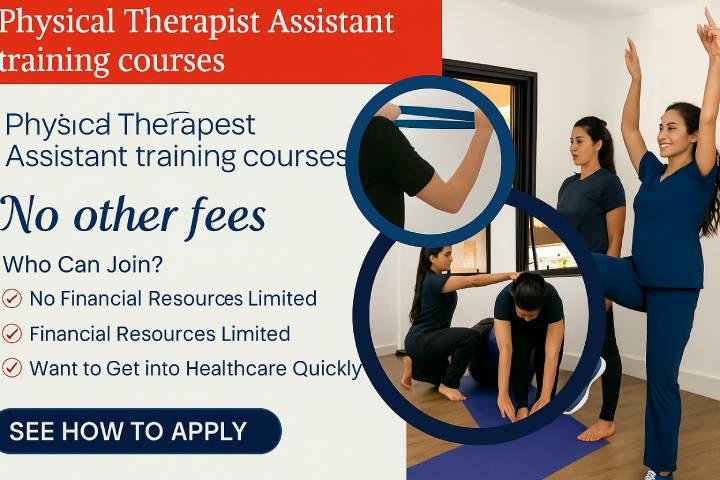CareerChangeOpportunity|NewChoiceInHealthcare |PaidTraining|PhysicalTherapyAssistant
In today’s rapidly evolving healthcare sector, becoming a Physical Therapist Assistant (PTA) is gaining attention as a stable and rewarding career choice. For those looking to switch professions or step into the healthcare field for the first time, this path offers both security and growth potential. A new training program supported by federal and state government will launch in early 2025. This initiative provides paid learning opportunities and welcomes applicants without prior experience, offering a solid foundation for career development.

Highlights of a PTA Career
Physical Therapist Assistants play an essential role in rehabilitation teams. They support physical therapists in helping patients improve mobility, relieve pain, and enhance their quality of life. With the aging population and rising numbers of individuals managing chronic conditions, demand for PTAs continues to grow.
Key benefits include:
✅ Strong job market demand
According to the U.S. Bureau of Labor Statistics, PTA roles are projected to grow faster than average over the next decade. Opportunities are available in rehabilitation centers, hospitals, nursing homes, and private clinics.
✅ Attractive salary
Current data shows the average annual salary for PTAs is close to $60,000. Those with specialized experience in areas like neurological or sports rehabilitation can earn over $80,000 per year.
✅ Flexible work environments
PTAs can work in various settings, and some positions offer part-time or flexible hours to help balance work and personal commitments.
2025 New Training Program: Government Support and Paid Learning
In response to increasing demand for PTAs, the new training program starting in March 2025 emphasizes practical skills and government-backed support. It is designed for beginners, covering fundamental medical knowledge, rehabilitation techniques, patient communication, and hands-on practice.
Program features:
🔹 Government support to ease financial pressure
The program is backed by federal and state agencies, with a clear and transparent fee structure. There are no hidden costs, allowing participants to focus on their learning.
🔹 Beginner-friendly curriculum
Courses start from the basics of anatomy and kinesiology, progressing to clinical skills. No prior medical background is required to succeed.
🔹 Paid learning with real-world experience
Through partnerships with healthcare institutions, participants can gain paid internship opportunities, earning while building essential experience for future employment.
Who Can Benefit from This Program
The program is suitable for a wide range of individuals, including:
✅ Professionals seeking a career change into healthcare
✅ Recent high school graduates looking for a stable career path
✅ People interested in rehabilitation but with no prior experience
✅ Those aiming to enter the workforce quickly through short-term training
Apprenticeship: Combining Classroom and On-the-Job Learning
In addition to traditional coursework, apprenticeship options offered by U.S. Department of Labor partner organizations combine on-the-job training with classroom learning. This helps participants gain practical skills while earning an income. Different age groups can choose paths that suit their goals:
🔸 Ages 18–25: Build initial healthcare work experience and a strong foundation.
🔸 Ages 26–35: Enhance professional skills in high-demand areas.
🔸 Ages 36–45: Transition careers or move toward supervisory roles.
🔸 Ages 46 and above: Explore flexible work arrangements or mentoring opportunities.
Application and Training Process
Interested individuals can follow these steps to join the program:
1️⃣ Check entry requirements (such as a high school diploma or GED).
2️⃣ Select an accredited training provider (such as community colleges or workforce training centers).
3️⃣ Submit required application documents; some programs may require a background check.
4️⃣ Begin coursework, complete both classroom and hands-on training, and proceed to clinical internships.
Career Growth Prospects
After completing training, PTAs can pursue employment at a variety of healthcare facilities or specialize further in fields such as geriatrics, pediatrics, or sports rehabilitation. With experience and continued education, advancement opportunities include senior PTA roles, department leadership positions, or pursuing a physical therapist degree for even greater earning potential and responsibility.
Conclusion
The 2025 training initiative offers an exceptional opportunity for those eager to enter the healthcare sector. With government support, paid learning, and beginner-friendly design, this career path is now more accessible than ever. For t


